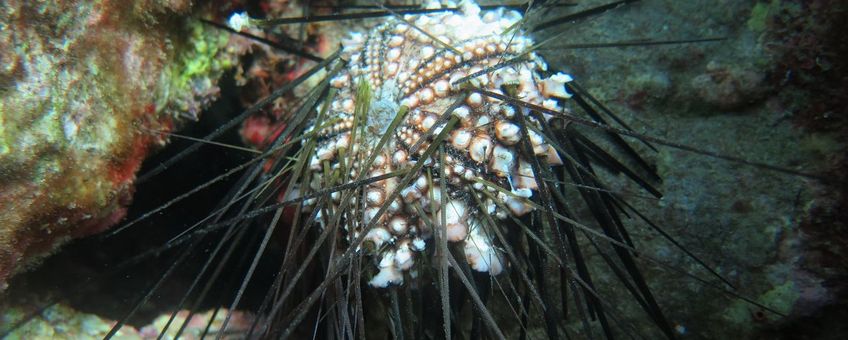
Mystery of the mass sea urchin die-off unraveled
Dutch Caribbean Nature Alliance (DCNA), Van Hall Larenstein, Wageningen University & ResearchDiadema sea urchins (Diadema antillarum) play a critical role in maintaining healthy coral reefs. Diadema sea urchins help sustain the delicate balance within the coral reef by grazing on algae, which are the main competitors of corals for space and light. In the mid-1980s, a disease swept through the Caribbean, wiping out nearly the entire sea urchin population.
A new mass die off was first observed in January 2022 in the US Virgin Islands. Over the next four months, these mass die offs were observed throughout the Caribbean, spanning more than 1,300 km from north to south and 2,500 km from east to west. These disease symptoms observed in the 2022 mass die-off were very similar to those observed during the die-off in the 1980s. Infected sea urchins quickly became ill and up to 99 percent of a population died within a few weeks.

Unraveling the Mystery
An international team of scientists, including researchers from Van Hall Larenstein University of Applied Sciences and Wageningen University, have now established that a ciliate – a single-celled organism characterized by the presence of hair-like structures – was responsible for the mass mortality. This was found by comparing the genetic material of healthy and sick sea urchins with all kinds of potential pathogens. A ciliary animal (Philaster sp.) was present in all diseased sea urchins and absent in healthy sea urchins from other sites.
The pathogen was then isolated in Florida and healthy sea urchins exposed to it in the lab soon showed the same disease symptoms. Subsequently, the cilia were found in the diseased sea urchins, providing clear evidence that these cilia were the primary pathogen causing the mass death.
Next Steps
This discovery has now been published and represents an important first step towards predicting and possibly preventing these types of disease outbreaks in the future. This is essential, as the grazing activities of the Diadema sea urchins are crucial for the conservation of the Caribbean coral reefs.
Fortunately, some Diadema populations have survived. In the RAAK Pro Diadema project Van Hall Larenstein University works closely together with other research institutes and local partners to restore long spined sea urchin populations on the coral reefs around Saba and St. Eustatius. This project is showing promising results in supporting regional efforts for restoring degraded coral reefs in the Caribbean.

DCNA
The Dutch Caribbean Nature Alliance (DCNA) supports science communication and outreach in the Dutch Caribbean region by making nature related scientific information more widely available through amongst others the Dutch Caribbean Biodiversity Database, DCNA’s news platform BioNews and the press. This article contains the results from several scientific studies but the studies themselves are not DCNA studies. No rights can be derived from the content. DCNA is not liable for the content and the in(direct) impacts resulting from publishing this article.
More information
- Alwin Hylkema and Tom Wijers at Wageningen University can be contacted for more information.
- Or check out the Special Edition BioNews covering last year’s Diadema die offs.
Text: DCNA
Photo's: Alwin Hylkema; Hans Leijnse
